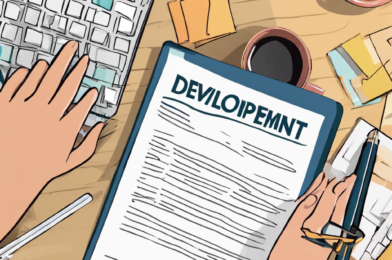Personal development is an ongoing process and creating a plan to enhance yourself can be a rewarding journey. It allows individuals to assess their strengths and weaknesses, set meaningful goals, and make positive changes in their lives. Here is a step-by-step guide to crafting a comprehensive personal development plan:
## Start with Self-Reflection
The first step is to engage in honest and deep self-reflection. Take time to consider your values, passions, and aspirations. Identify your strengths and weaknesses, and be mindful of areas where you’d like to grow. This introspection sets the foundation for your plan, ensuring it is tailored to your unique needs and desires. Journaling or meditation can help bring clarity and focus to this stage.
## Set Meaningful Goals
Define specific and achievable goals that are in alignment with your self-reflection. Ensure your goals are SMART: specific, measurable, attainable, relevant, and time-bound. For example, instead of saying “I want to be healthier,” set a goal like “I will walk for 30 minutes, 3 times a week to improve my cardiovascular health.” This provides a clear path to success.
## Create an Action Plan
Break down your goals into smaller, manageable tasks. For example, if your goal is to learn a new language, your action plan could include finding an online course, setting aside study time each day, and practicing conversation with a native speaker. Ensure your plan is realistic and adaptable to your lifestyle.
## Seek Learning Opportunities
Personal growth often comes from learning new skills or acquiring knowledge. Embrace a growth mindset and seek out learning opportunities that align with your goals. This could be taking a course, reading books, attending workshops, or even finding a mentor who can guide and support your development.
## Measure and Evaluate
Regularly assess your progress to stay on track and maintain motivation. reflect on your successes and challenges, and adjust your plan as needed. Evaluation keeps you accountable and helps you identify areas where you may need additional support or resources.
## Embrace Challenges
Personal development often involves stepping out of your comfort zone. Embrace challenges and view setbacks as opportunities to learn and grow. A growth mindset is key – believe in your ability to develop and improve, and don’t let fear hold you back from trying new things.
## Maintain Consistency
Consistency is vital to your success. Small, consistent steps add up over time, leading to significant progress. Build routines and habits that support your goals, and be disciplined in your approach. For example, if your goal is to write a novel, commit to writing a certain number of words each day.
## Stay Motivated
Keep yourself inspired by surrounding yourself with positivity and like-minded individuals. Find a mentor or join a community that shares your interests and can provide support and encouragement. Regularly remind yourself of your ‘why’ – the reasons behind your goals, to stay motivated when challenges arise.
## Celebrate Achievements
Recognize and celebrate your accomplishments along the way. Celebrating boosts motivation, reinforces positive behavior, and helps you stay focused on your journey. It also allows you to acknowledge your hard work and the progress you’ve made.
Creating a personal development plan is a powerful tool for growth and transformation. It provides structure and direction, enabling you to strive towards your aspirations and live a life of continuous improvement and fulfillment.
I hope this article was helpful and provided valuable insight into crafting a comprehensive personal development plan. It is a rewarding process that empowers individuals to lead fulfilling and meaningful lives.







